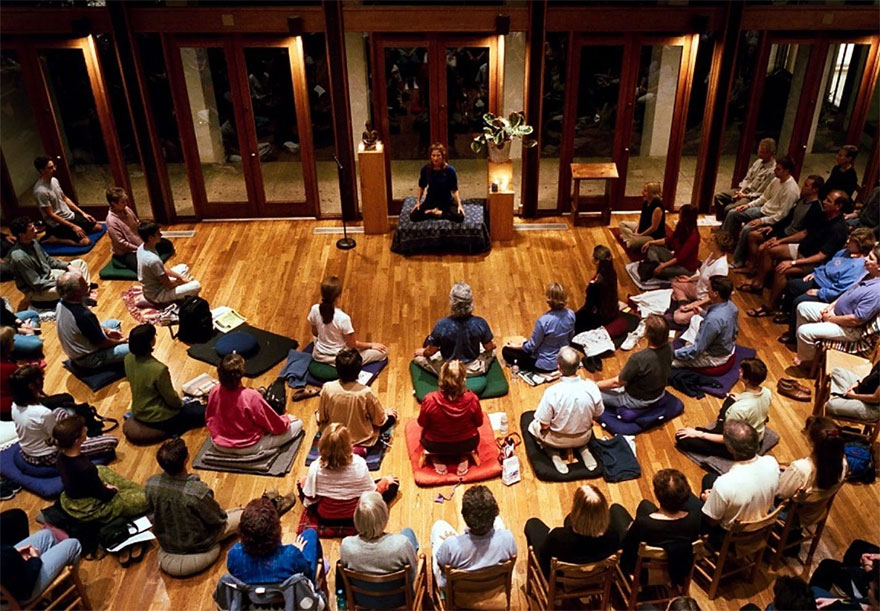Meditation may slow age-related brain atrophy, new research suggests. An imaging study conducted by investigators at the University of California, Los Angeles, showed that long-term meditators experienced less gray matter loss compared with matched control persons who did not meditate.
Particularly surprising was the magnitude of this effect in nine clusters throughout the brains of meditators, suggesting that the practice affects more areas of the brain than previously thought.
“We expected that there would be small regions in the brain where we would see an effect ― mostly in regions where there was a difference reported before,” lead investigator Florian Kurth, MD, PhD, postdoctoral fellow at the University of California, Los Angeles (UCLA) Brain Mapping Center, told Medscape Medical News. “What we found, however, were effects throughout the whole brain, which is something really different; it’s really huge.”
[wp_ad_camp_1]
The researchers report that this is the largest related study of the effects of meditation on the brain, and it is also unique because it looked at long-term meditators.
The article was published online January 21 in Frontiers in Psychology.
Widespread Effect
The study included 50 meditators (28 men and 22 women) ranging in age from 24 to 77 years (mean age, early 50s) who had practiced meditation for from 4 to 46 years (mean, almost 20 years). It also included 50 matched control participants (28 men and 22 women) who did not meditate.
All participants underwent MRI of the brain at the same site using the same scanner and following the same scanning protocol.
The investigators examined the association between age and whole-brain gray matter and between age and local gray matter.
For whole-brain gray matter, they found a significant negative correlation in both control persons and meditators (for both, P < .001), suggesting age-related gray matter decline in both groups.
However, on slopes depicting global gray matter volume and age in years, the regression lines were considerably steeper in control persons than in meditators. The group-specific correlation coefficients were higher in control persons, and the group-by-age interaction was highly significant (P = .003).
This suggests less age-related gray matter decline in meditators than in control persons.
When looking at localized sections of the brain, researchers found significant negative correlations in control persons and in meditators, again suggesting age-related gray matter decline in both groups. However, once more, the analysis showed that age-affected brain regions were much more extended in control persons than in meditators.
“In other words, echoing the global gray matter effect, the age-related decline of local gray matter was less prominent in meditators,” the authors note.
The study also revealed nine clusters spread throughout the entire brain where the difference in meditators was particularly significant.
“We were surprised at how widespread the effects were,” said Dr Kurth.
Potential Mechanisms
There are several mechanisms by which meditation may protect the brain. It may relieve stress, which is “almost toxic” to neurons in some brain areas, said Dr Kurth. The effects of stress reduction might be particularly strong in regions that are particularly vulnerable to stress ― for example, the hippocampus.
The investigators plan to zero in, using different analytic methods, on these brain regions “to see if we can replicate this effect.”
Another way that meditation may protect the brain is that intense mental activity may stimulate dendritic branching and/or synaptogenesis, which might manifest as increased gray matter.
Over time, such gray matter gain may “mask” the gray matter loss that is normally observed in aging, sort of counteracting the normal age-related decrease. Dr Kurth likens this to “body building” of the brain similar to physical workouts that increase muscle mass.
It might just be that meditators start off with a healthier lifestyle ― eating healthy foods, avoiding smoking, exercising regularly ― and have the type of personality that helps protect the brain.
“In order to keep meditating for close to twenty years, individuals need to possess a minimum level of discipline and commitment, a well-organized life that allows them the spare time, an awareness of the possibility to control their own life, perhaps even a calm nature to begin with,” the authors note.
Although the current study cannot rule out the possibility that other factors contribute to brain protection in meditators, the new research should prompt more follow-up studies, said Dr Kurth. Ideally, this would involve two groups ― identical except that one meditates and the other does not ― who are followed during a long period.
It is not clear from this study whether the type of meditation or the frequency of meditation sessions played a role in protecting the brain, said Dr Kurth.
Note of Caution
Commenting on the findings for Medscape Medical News, David Vago, PhD, associate psychologist, Functional Neuroimaging Laboratory, Department of Psychiatry, Brigham and Women’s Hospital, and instructor, Harvard Medical School, in Boston, Massachusetts, said that because the study was not reviewed by major neuroimagers, he cannot say at first glance that the methods used were perfect.
“But in general, I think it’s safe to say that this study has merit indeed.”
Although the results support previous research, Dr Vago cautioned against “hyping” the findings. “They are remarkable in that they help move the science forward, but interpreting them incorrectly can lead to broad generalizations that are really not true.”
He stressed that there are always issues in interpreting such data. “Anyone who is a nonimager ― and definitely any nonscientist ― should realize that we don’t have a firm understanding of what such gray matter changes really mean. It implies that gray matter loss is correlated with cognitive decline in aging, but this is not certain.”
He added that because the data are cross-sectional in nature and because the meditators in the study varied so widely in terms of type of practice, frequency of practice, and years of experience, “it’s hard to make a definitive statement of anything related to this group or to generalize it to anyone outside this group or any particular style of meditation.”
Dr Vago agreed that the effects may be due to the meditators’ lifestyle or personality type. “There very well could be differences in gray-matter volume that have nothing to do with the fact that they sit on a cushion.”
Future studies will have to follow novice practitioners of specific forms of meditation longitudinally to get a more accurate picture how practice time may map onto changes in the brain, he said.
Source: medscape.com










